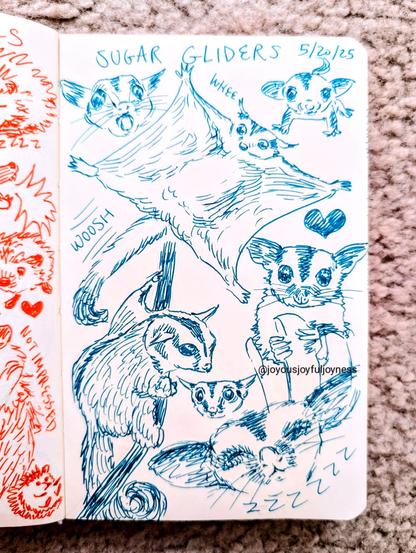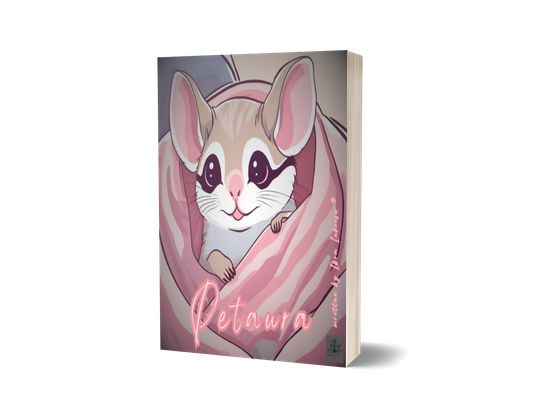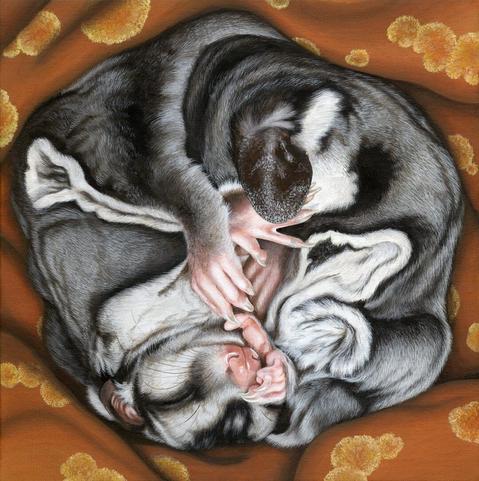Sugar Glider - Petaurus breviceps
The sugar glider (Petaurus breviceps) is a small, omnivorous, arboreal, and nocturnal gliding possum. The common name refers to its predilection for sugary foods such as sap and nectar and its ability to glide through the air, much like a flying squirrel. They have very similar habits and appearance to the flying squirrel, despite not being closely related—an example of convergent evolution. The scientific name, Petaurus breviceps, translates from Latin as "short-headed rope-dancer", a reference to their canopy acrobatics.
The sugar glider is characterised by its pair of gliding membranes, known as patagia, which extend from its forelegs to its hindlegs. Gliding serves as an efficient means of reaching food and evading predators. The animal is covered in soft, pale grey to light brown fur which is countershaded, being lighter in colour on its underside.
The sugar glider, as strictly defined in a recent analysis, is only native to a small portion of southeastern Australia, corresponding to southern Queensland and most of New South Wales east of the Great Dividing Range; the extended species group, including populations which may or may not belong to P. breviceps, occupies a larger range covering much of coastal eastern and northern Australia, New Guinea, and nearby islands. Members of Petaurus are popular exotic pets; these pet animals are also frequently referred to as "sugar gliders", but recent research indicates, at least for American pets, that they are not P. breviceps but a closely related species, ultimately originating from a single source near Sorong in West Papua. This would possibly make them members of the Krefft's glider (P. notatus), but the taxonomy of Papuan Petaurus populations is still poorly resolved. (Text Source: Wikipedia)
#wildlife #animals #conservation #photography #sugarglider #marsupials

